#nasa johnson
Explore tagged Tumblr posts
Text




nasa johnson overlooking our planet
#photography#flickr#outer space#space#earth#aesthetic#astrophotography#nasa#nasa photos#nasa picture of the day#nasa johnson
21 notes
·
View notes
Text
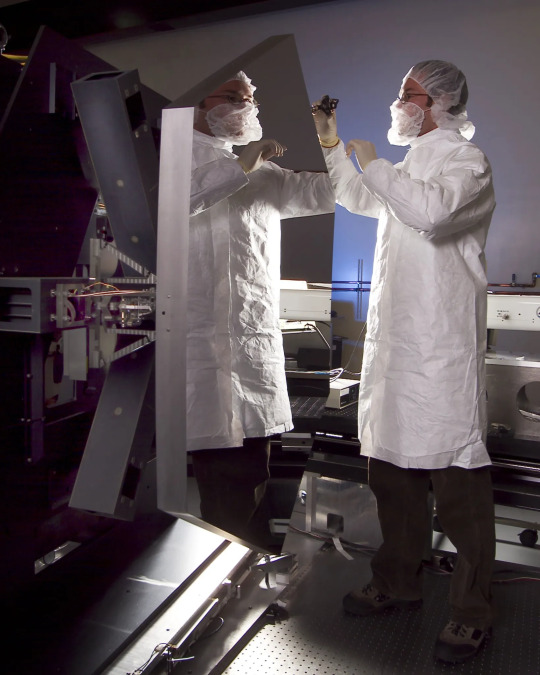
Since many materials change shape when they change temperature, a test team from Ball Aerospace worked together with NASA engineers at Marshall’s X-ray and Cryogenic Facility (XRCF) to cool the mirror segments down to the temperature Webb is experiencing in deep space, -400 degrees Fahrenheit (-240 degrees Celsius).
Cryogenic testing of the primary mirror segments began in at Marshall’s XRCF by Ball Aerospace in 2009.
The change in mirror segment shape due to the exposure to these cryogenic temperatures was recorded by Ball Aerospace Engineers using a laser interferometer. This information, together with the mirrors, traveled back to California for final surface polishing at Tinsley. The mirrors’ final polish was completed in June of 2011.
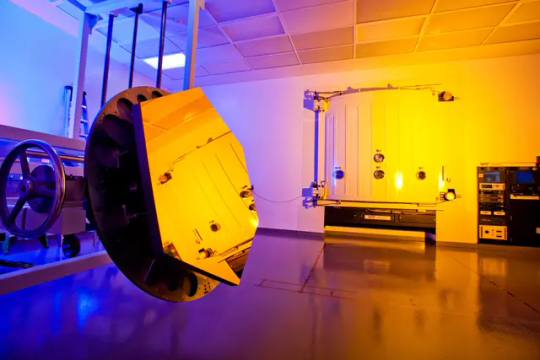
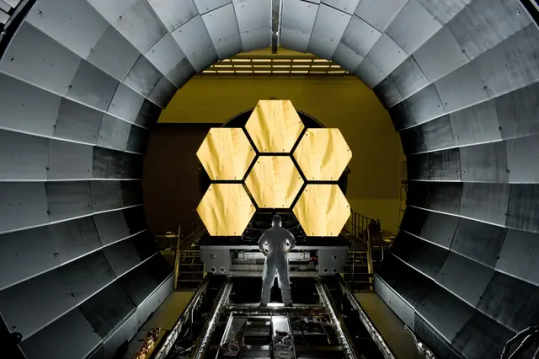
By the end of 2013, all the flight primary mirror segments, as well as the secondary and tertiary mirrors would be at Goddard. The mirrors were stored in special protective canisters in the cleanroom, awaiting the arrival of the flight telescope structure.
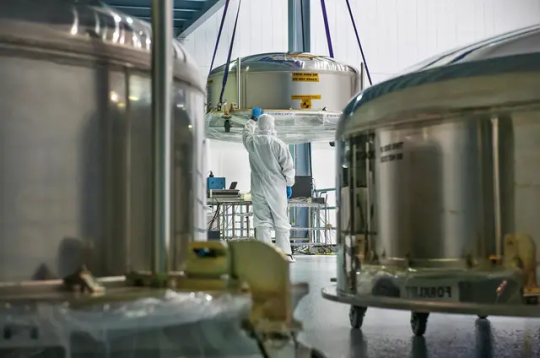
Inside a massive clean room at NASA’s Goddard Space Flight Center in Greenbelt, Maryland the James Webb Space Telescope team used a robotic arm to install the last of the telescope’s 18 mirrors onto the telescope structure.
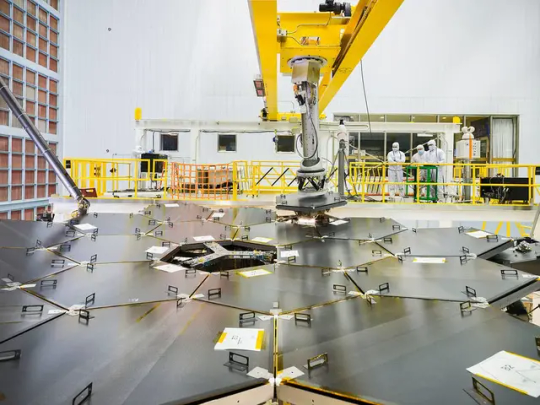

James Webb Space Telescope Mirror Seen in Full Bloom

Once the mirrors were completed, the science instruments were integrated into the telescope. While at Goddard, the telescope also underwent environmental testing – both acoustic and vibration – to ensure it would be able to withstand the rigors of launch. That successfully completed, the telescope was sent off to NASA Johnson in Houston, Texas, for tests of the optics and instruments at cryogenic temperatures. NASA Johnson’s Chamber A is the only thermal vacuum chamber NASA has that is large enough for Webb!
Once the telescope reached orbit, engineers on Earth made adjustments/corrections to the positioning of the Webb telescope’s primary mirror segments to bring them into alignment – to ensure they would produce sharp, focused images.
#science#nasa#goddard#james webb space telescope#james webb telescope#jwst#telescope#astronomy#physics#nasa johnson#johnson space center#houston texas#mirror polishing#Ball Aerospace#Marshall’s X-ray and Cryogenic Facility (XRCF)#xrcf#cryogenic#cryogenic testing#engineering#laser interferometer#goddard space flight center#jwst full bloom#science instruments#science achievement#human achievement
3 notes
·
View notes
Text


"An overall view of the Manned Spacecraft Center's Mission Control Center, during the National Aeronautics and Space Administration's Gemini-7 spaceflight."
Date: December 7, 1965
NASA ID: S65-60037, S65-60039
#GT-7#GT-VII#Gemini 7#Gemini VII#NASA#Gemini Program#Project Gemini#Gemini#Mission Control#Lyndon B. Johnson Space Center#Johnson Space Center#Manned Spacecraft Center#Houston#Texas#December#1965#my post
600 notes
·
View notes
Text

Katherine Johnson was an African-American mathematician whose work was fundamental at NASA. Her precise calculations helped ensure the success of the Mercury and Apollo space missions, including the historic Apollo 11 moon landing. Her life and work were immortalized in the film "Hidden Figures."
752 notes
·
View notes
Text
Katherine Johnson: The Mathematician Who Launched Astronauts into Space and Women into STEM 🚀👩🚀
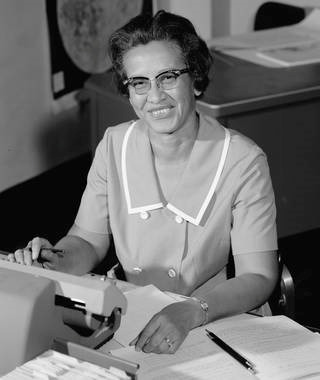
In the vast expanse of the cosmos, where men first dreamed of reaching the stars, Katherine Johnson calculated the path that would get them there. This story isn't just about trajectories and orbits; it's about a woman whose brilliance in mathematics helped break the barriers of space and gender.

Johnson's journey began in White Sulphur Springs, West Virginia, where her curiosity and intelligence shone from an early age. Despite encountering segregation and sexism, she charted a course that would lead her to NASA, where her skills became indispensable to the success of the U.S. space program. Her calculations were critical to the success of the Mercury missions, including John Glenn's pioneering orbital flight, for which he specifically requested Johnson verify the computer's numbers. "If she says they're good," Glenn said, "then I'm ready to go."

But Johnson's contributions went beyond Mercury. She also played a role in the Apollo missions, including the first lunar landing, and her work on orbital mechanics laid the groundwork for the Space Shuttle program and plans for a Mars mission.
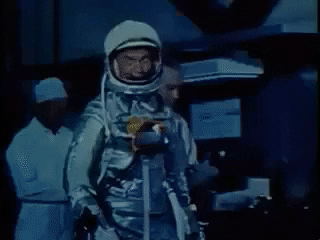
Her legacy is a beacon for women and people of color in STEM, symbolizing the power of intelligence and perseverance to overcome societal constraints. Johnson's story teaches us that the path to the stars is paved with determination, hard work, and an unwavering belief in one's own abilities.

Katherine Johnson's calculations helped lead humanity to the moon, but her impact extends far beyond the numbers. She charted a course for future generations of women in STEM, proving that the sky is not the limit—it's just the beginning. As we look up at the stars, we remember her legacy, not just as a mathematician, but as a trailblazer who launched us into a new era of exploration and equality.
#PiDay#KatherineJohnson#Katherine Johnson#NASA#Mathematics#National Archives#Women's History Month#HERstory#Archives#Apollo13#Mercury#STEM#Women in STEM#Science
611 notes
·
View notes
Text

157 notes
·
View notes
Text



Outstanding, couldn't have picked a more deserving person.
37 notes
·
View notes
Text

Johnson Space Center Houston, Texas
#NASA#Johnson Space Center#Space Shuttle#Endeavour#747#Shuttle Carrier Aircraft#Aerospace#Space Center#SCA
37 notes
·
View notes
Video
Gateway Full Configuration - Hero Image by NASA Johnson Via Flickr: The Gateway space station will be humanity's first space station around the Moon as a vital component of the Artemis missions to return humans to the lunar surface for scientific discovery and chart the path for the first human missions to Mars. Astronauts on Gateway will be the first humans to call deep space home during missions where they will use Gateway to conduct science and prepare for lunar surface missions. Photo Credit: NASA Secondary Creator Credit: Alberto Bertolin, Bradley Reynolds
#European Space Agency#Johnson Space Center#Kennedy Space Center#Moon#NASA#space#USA#station#Science#Canadian Space Agency (CSA)#Japan Aerospace Exploration Agency (JAXA)#flickr
45 notes
·
View notes
Text

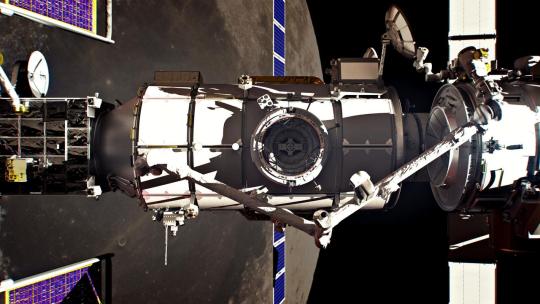


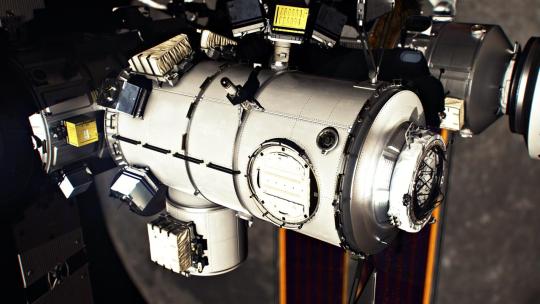


Johnson Space Center uploaded some new renders of Lunar Gateway to their Flickr last week. My sources on the inside inform me these are fairly up-to-date design iterations. Module ID in the alt-text.
#nasa#lunar gateway#artemis program#johnson space center#orion spacecraft#halo#i hab#esprit rm#alm#canadarm3#dragon xl#moon#luna#artist's rendering
86 notes
·
View notes
Text

We went to NASA!! It was AWESOME
#sweet lolita#classic lolita#classic egl#sweet egl#lolita fashion#egl fashion#egl coord#baby the stars shine bright#metamorphose temps de fille#cotton candy feet#kawaii fashion#johnson space center#saturn v#nasa photos#nasa#pearl bouquet jsk#pearl bouquet jsk ii
5 notes
·
View notes
Text
#NowPlaying: "Houston We Have a Podcast: Space Biology" by NASA
#Nowplaying#Newmusic#SoundCloud#NASA#Johnson#Space#Center#JSC#Science#Research#Audio#Podcast#Houston#Biology#hip hop#rnb#electronic#jazz#lofi
22 notes
·
View notes
Text

NASA’s James Webb Space Telescope sits inside Chamber A at NASA’s Johnson Space Center in Houston after having completed its final cryogenic testing on Nov. 18, 2017.
Engineers tested this alignment process in the cryogenic, vacuum environment of Chamber A at NASA’s Johnson Space Center during about 100 days of cryogenic testing. The environment of the chamber simulates the frigid space environment where Webb operates, and where it collects data of never-before-observed portions of the universe. Inside the chamber, engineers fed laser light into and out of the telescope, acting like a source of artificial stars. The test verified the entire telescope, including its optics and instruments, worked correctly in this cold environment and ensured the telescope would work correctly in space.
#nasa#jwst#james webb space telescope#james webb telescope#johnson space center#cryogenic testing#houston texas#vacuum environment#cryogenic#telescope#science#optics#space#space exploration#math#physics
10 notes
·
View notes
Text






Mission Control after the safe recovery and delivery to Hornet of the Apollo 11.
Date: July 24, 1969
NASA ID: S69-40300, S69-40023, S69-40022, S69-40024, S69-40025, S69-40029
#Apollo 11#Apollo CSM Block II#CSM-107#Columbia#NASA#Apollo Program#G-type mission#Splash Down#Splashdown#Recovery#USS HORNET (CV-12)#USS HORNET#Essex Class#Aircraft Carrier#Pacific Ocean#July#1969#Mission Control#Lyndon B. Johnson Space Center#Johnson Space Center#Manned Spacecraft Center#Houston#Texas#my post
62 notes
·
View notes
Text

Katherine Johnson by Allison Adams
Katherine Johnson (1918-2020), mathematician and computer scientist, was one of NASA’s human ‘computers,’ who performed the complex calculations that enabled spacecraft to orbit Earth and to land on the moon.
#katherine johnson#art#artwork#Allison adams#herstory#women in stem#black history#woc#female portrait#nasa#female scientists#female mathematicians#women of colour#irl women/girls
7 notes
·
View notes
Text


They have a mural in the Johnson Space Center painted by Alan Bean, with moondust from his space suit incorporated into the paint :')
2 notes
·
View notes